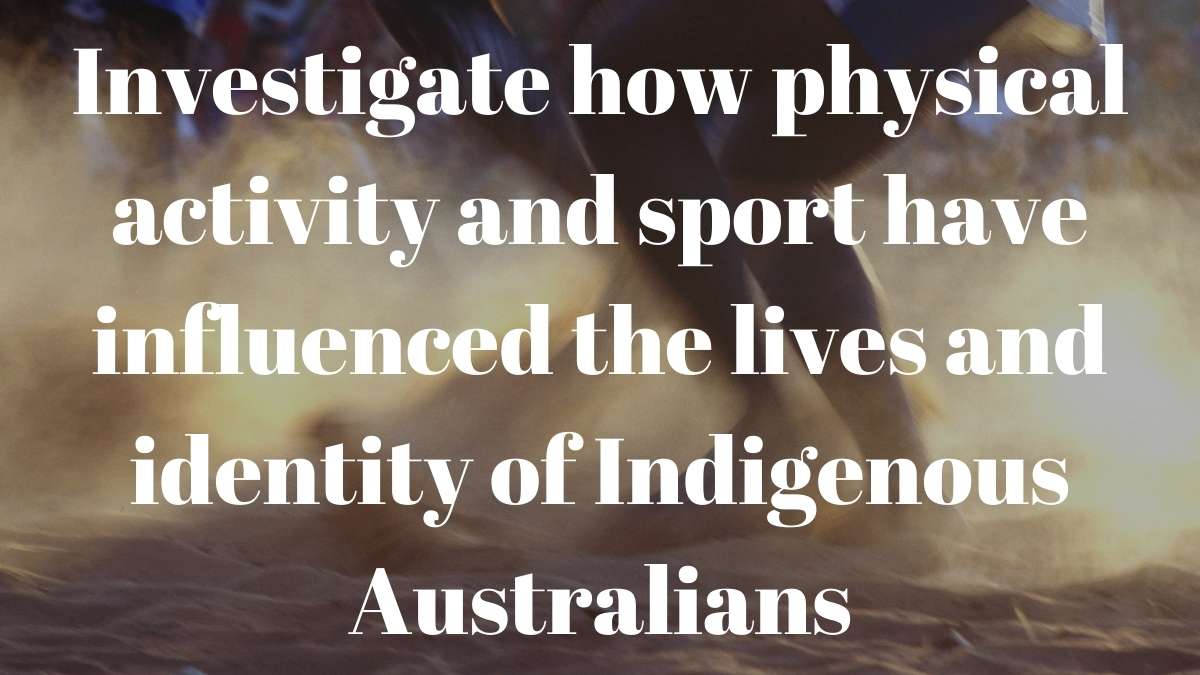Investigate how physical activity and sport have influenced the lives and identity of Indigenous Australians
Physical activity has always been a part of who Indigenous people are. It forms part of their heritage and was vital for their lifestyle as hunters and as they travelled around their countries. As indigenous athletes became more involved in modern western sports they quickly dominated. People in the industry even asked the Governor of Queensland to ban all indigenous athletes from competition because “they always won”.
Over the year the indigenous people have only continued to dominate sports with many athletes using their position to show pride in their culture and be a positive role model for other Indigenous people. Cathy Freeman was the face of track and field from 1990-2000 winning many gold and silver medals at various meets. In 1994, after winning gold at the Commonwealth Games, Cathy completed her lap of honour with both the Australian and Aboriginal flags, which was censored by the ACGA but brought her a lot of support from indigenous Australians back home.
The success of such athletes and their role in promoting culture and identity for all indigenous Australians is huge. 1993 was the year of Native Title legislation and the year that Nicky Winmar lifted his AFL shirt and declared ‘I’m black and I’m proud to be black’. This was one of the most important moments in the AFL. Fighting against racism continues to be part of the identity and role indigenous athletes fulfil. Adam Goodes used his position as an elite and famous AFL player to raise awareness around racism in Australia towards indigenous people. His role in the documentary “the final quarter” aims to raise awareness around racism and help us make better decisions going forward.

